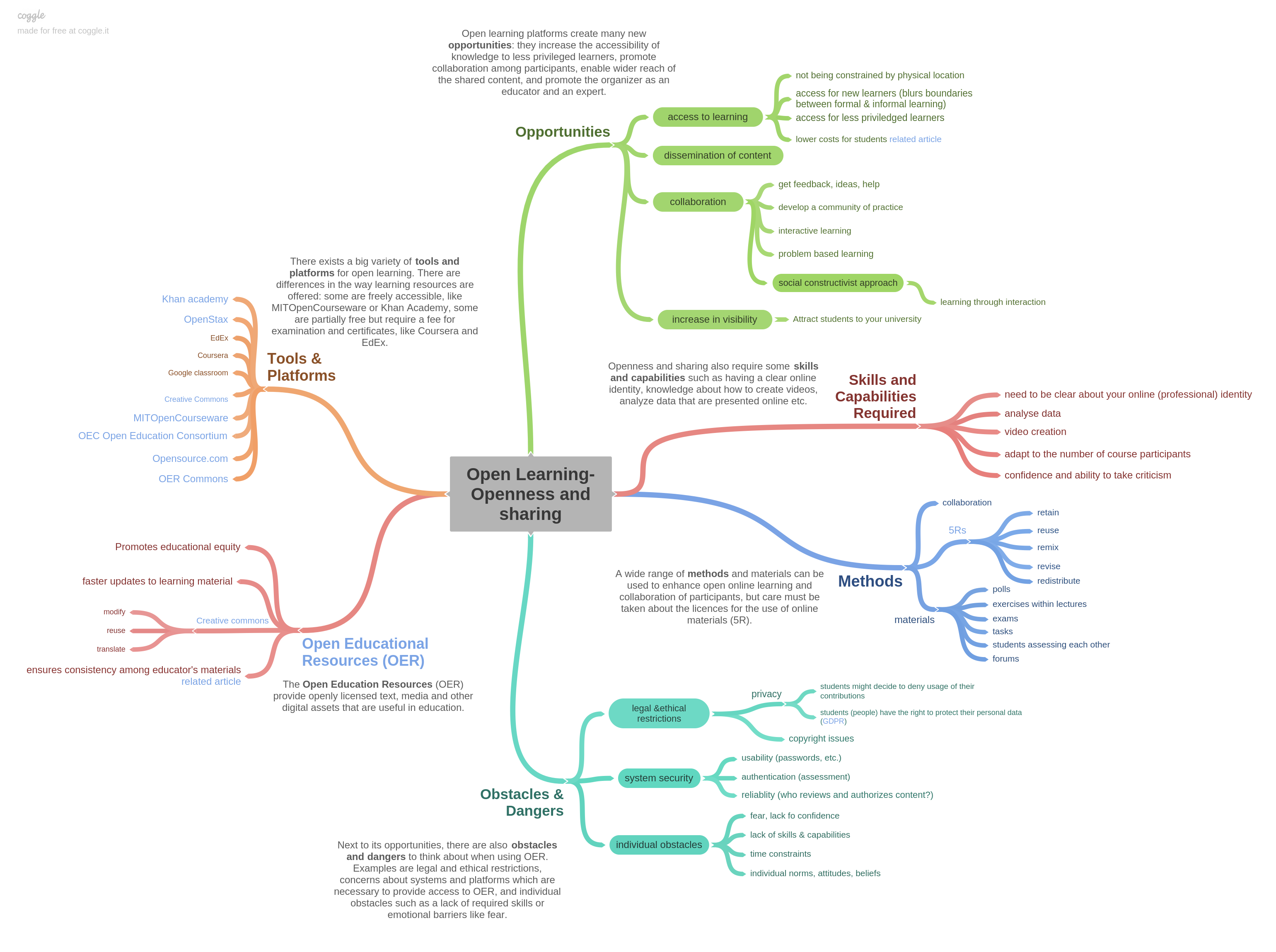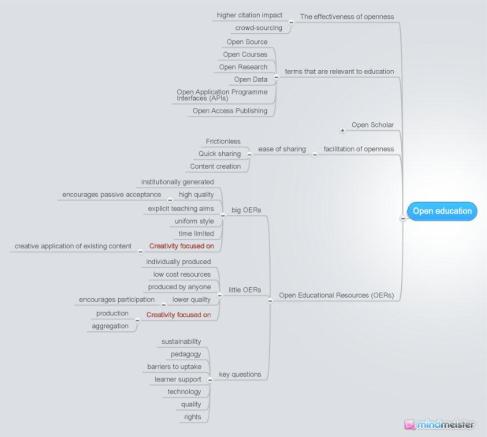An increasing number of public institutions and private organizations are supporting Open Education Resources (OERs) to make knowledge and learning available to educators and students alike. Not to turn the great expectations connected to this new global movement of the last decade into disappointment, some fundamental issues need to be resolved, as for example how to ensure sustainability, regulate reusing resources without violating intellectual property rights, or overcome persistent access barriers to OERs.
Sustainability
The momentous role foundations like the William and Flora Hewlett Foundation or the Andrew W. Mellon Foundation are playing in getting the OER movement underway in the first place is based on ethical ideals. Globally unrestricted access to knowledge and learning are in line with article 26 of the Universal Declaration of Human Rights, or they can be promoted as a requisite of democracy or supporting scholarship and helping the general advancement of science. But whatever the driving motives for funding OER initiatives are, lack of sufficient means to cover running costs and ensure that course materials are updated and quality ensured is a recurring issue in the OER debate (Caswell et al, 2008).
Relying on foundation money alone cannot guarantee sustainability of OERs and alternative funding options need to be found. Offering basic courses for free and demand license or tuition fees for further services are one possibility, contributions to OER infrastructure, support or content in exchange for access and participation another (Downes, 2007). Once working solutions to key issues have been found and established, OERs might even be able to offer very specific services as for example regarding copyright permissions (Yue, Yang, Ding, and Chen, 2004).
Intellectual property rights
One important driver of OERs is the reusability of materials, reflected in a the very common definition that they are about offering digitised materials “freely and openly for educators, students and self-learners to use and reuse for teaching, learning and research” (OECD, 2007, p. 10). The possibility to freely use and reuse materials in a digital environment naturally creates issues of intellectual property rights which need to be resolved.
Because intellectual property law asks for highly specialized subject area expertise, a resolution of this issue is very difficult to achieve for an OER operator alone and is almost impossible to understand for individual users and re-users of open content. Nevertheless, a clear regulation of how intellectual property is protected in a community that is itself founded on sharing information is absolutely vital for the very functioning of this community (Fitzgerald et al, 2006).
One attempt to come to terms with the copyright issue are the Creative Commons licenses, which enables copyright owners to define in advance to which degree they are giving permission for re-using their intellectual property.
Quality and perception
Even if financial and legal issues can be resolved, there are still barriers which prevent users of accessing OERs in the first place. The technological infrastructure like bandwidth or internet hardware required to access online education are not available to a sufficient degree globally and hence the OER movement is still very much restricted to the developed countries.
While technical infrastructure barriers will eventually be overcome with the development and distribution of affordable internet devices and improved network access, the variety and quality of content available in OERs will continue to shape the perception of OERs in general. In this context it is doubtful that quality can be transparently measured by introducing – similar to copyright standards – common standards. Moreover, such standards to a certain degree undermine the very idea of participatory OERs when it is less complete training materials that seems to best support creativity and willingness to contribute to OERs (Weller, 2012). Therefore other ways of measuring quality will need to be developed, like for example peer-to-peer evaluation.
References
Caswell, T. et al., (2008) ‘Open educational resources: Enabling universal education’. International Review of Research in Open and Distance Learning, vol 9(1), 1–4. Available at http://www.irrodl.org/index.php/irrodl/article/view/469/1001 (accessed 23 March 2012).
Downes, S. (2007), ‘Models for sustainable open educational resources’, Interdisciplinary Journal of Knowledge and Learning Objects, vol. 3. Available at http://ijklo.org/Volume3/IJKLOv3p029-044Downes.pdf (accessed 23 March 2012).
Fitzgerald, B. et al (2006), ‘Creating a Legal Framework for Copyright Management of Open Access within the Australian Academic and Research Sector’, OAK Law Report Number 1, August 2006. Available at http://eprints.qut.edu.au/6099/1/Printed_Oak_Law_Project_Report.pdf (accessed 25 March 2012).
OECD (2007), Giving Knowledge for Free. The Emergence of Open Educational Resources, Available at http://www.oecd.org/edu/ceri/38654317.pdf (accessed 23 March 2012).
Weller, M. (2012) ‘The openness–creativity cycle in education’, Special issue on Open Educational Resources, JIME, Spring 2012 [online]. Available at http://jime.open.ac.uk/jime/article/view/2012-02 (accessed 21 March 2012).
Yue, K.B., Yang, T.A., Ding, W., Chen, P. (2004), ‘Open Copurseware and computer science education’, Journal of Computing Sciences in Colleges, 20(1)20(1), 178-186. Available from: http://portalparts.acm.org.libezproxy.open.ac.uk (accessed 21 March 2012).



